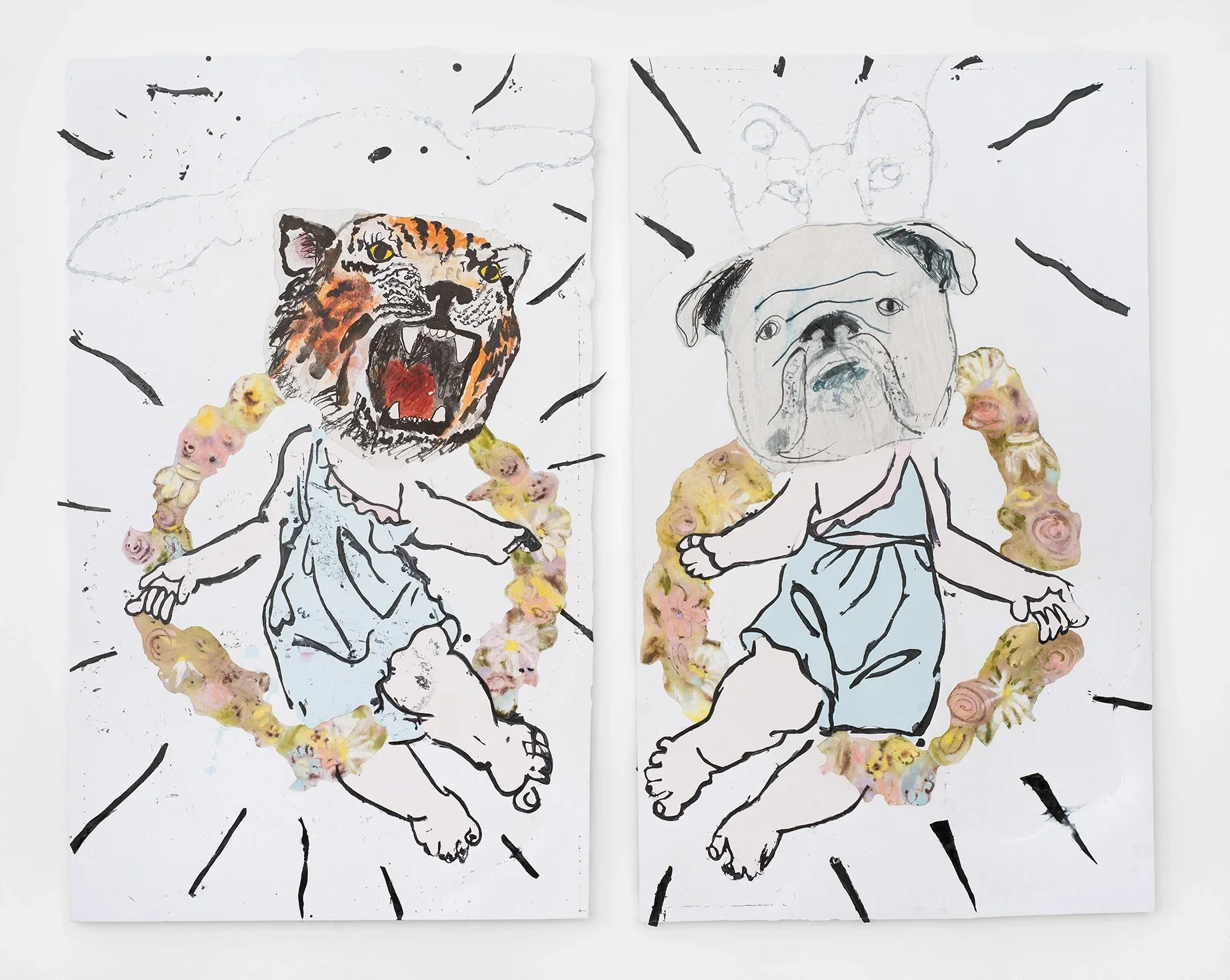Terrazzo Stargates: The Work of Erin Lee Jones
Erin Lee Jones Guardians of Myth are Rarely Soft, 2025, Olympia NYC
Sumi ink, alloyed of soot, water, and animal glue, holds sacred status in East Asian traditions. In Zen calligraphy, Daoist talisman-making, and Shingon Buddhist customs, ink is not only a medium; it is a spell in itself. The act of grinding ink and applying it with a brush becomes a meditative invocation, each stroke a bridge between the visible and the invisible, the known and the mysterious. In these traditions, inked lines function as energetic transmissions, mapping the ineffable.
Historically, sumi ink was used to inscribe mantra scrolls and celestial diagrams, often created under specific planetary or lunar conditions. The blackness of the ink signified both a spacious presence and the concentrated darkness of transformation. It sealed intentions, cast out spirits, and summoned deities. Ink became spirit made visible, a mirror for the unseen.
In ancient Babylon, crystals were revered as living agents of the cosmos. Each stone resonated with particular planets, deities, and protective functions. Lapis lazuli evoked the goddess Ishtar to summon love. Hematite was linked to Nergal and used to ward off malevolent forces. These materials were carved into seals, worn as amulets, and employed in astral medicine to harmonize the body with the movements of the stars.
Central to this worldview, was the belief in celestial gates, portals through which gods, energies, and souls traversed. Minerals acted as both anchors and keys. They could bind harmful forces, redirect stellar currents, and call down divine presence into temples, bodies, and objects. In this way, gems operated as guardians in material form, holding both protective and revelatory power.
Materials and processes function not only as carriers of aesthetic meaning, but as conduits for cosmic, and protective force. Both a personal cosmology, and devotional technology, the sculptural monoprints of Erin Lee Jones, embody these truths merging the union of elemental opposites. Sumi ink, a vessel of dark, yin, lunar essence fuses with dispersive terrazzo glass, a radiant trace of solar, yang, crystalline stardust. Shadow and light, absorption and radiance coalesce. As conductive sigils, tin foil and ancestral heirlooms perform psychic circuitry, grounding this coincidentia oppositorum into form, memory, and shield. Simultaneously relic and revenant, Jones’ work unites multiple metaphysical lineages as both portals and protectors.
In Jones’ practice, ancient material legacies are reanimated. Her process employs a contemporary form of scrying, one that collapses the distance between ancient civilizations, astrofuturism, and personal mythos. Each pillar is a locus of convergence, a casted frequency holder, forged through ritual and visionary sight.
Using mold-making and casting techniques, Jones engages in a kind of ceremonial archaeology. Her figures, often rough-hewn, metallic, or ink-black, appear at once exhumed from the earth and descended from the heavens. They resemble fragments of a forgotten temple, yet stand sentinel in the present, charged with a custodial resonance. These forms suggest guardians imbued with lapidary star wisdom, who have always existed and whose time has come again.
The material world is not dead, but suffused with agency. Transformation of matter mirrors the transmutation and preparation of the soul. In Jones’ practice, casting becomes a ritual of revitalisation where swaddling, embalming, and encasing give way to rebirth. Much like the ancient preparations of the dead in cultures from Egypt to India, Jones’ sculptural process marks a consecrated passage from one state of being to another. Born of intentional scavenging, puja offerings, and care, a new form of life karmically informed from the amalgamation of several timelines emerges, positioning death as another kind of birth.
Guardians of myth are rarely soft. They are fierce, monstrous, multi-limbed, or multi-eyed. As threshold entities they appear at entrances to temples, tombs, or dreams. From the wrathful Mahakalas of Vajrayana Buddhism to the Lamassu of Assyria, such figures embody both defense and fearlessness, preserving sacred spaces, while heralding one’s journey into deeper mystery.
Jones excavates this archetypal terrain, and midwives it into fresh interconnected forms. In doing so, she conjures an idiosyncratic yet familiar vision, one that honors the hierophanic potency of both materials and process, while addressing the emotional urgency of protection, becoming, and transformation. Her Olympian stargate is a visual and spiritual grammar of guardianship, honoring the fierce guides that steward both outer and inner voyages.
Text by Wells Chandler
Exhibition essay for Erin Lee Jones’ Guardians of Myth are Rarely Soft at Olympia, New York, NY September 3- October 17, 2025
